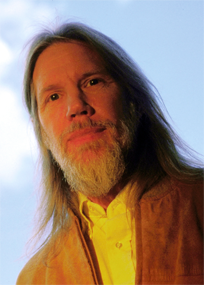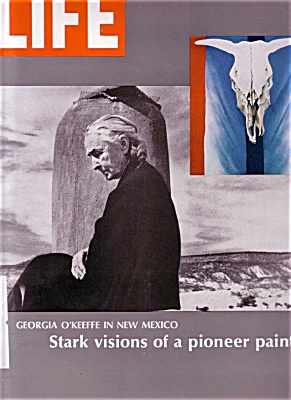If.
You are currently browsing the archive for the Videos category.
Tags: Stephen Hawking
From Singularity Hub: “One of the most important concerns in integrating robots into human environments is keeping people safe. Yun demonstrates (towards the end of the clip) that Mahru has great compliance control. You can shake its hand, or push on its body, and the robot will give way. This keeps the robot from hurting you even if the guy operating Mahru turns out to be a psychopath.”
Few magazines have made such a mark.
Tags: Kevin Kelly
Number 1 in Europe for ten weeks in 1975. (Thanks Reddit.)
Tags: Telly Savalas
Batgirl ain’t having it. From 1974.
Go to the 3:20 mark to see the unveiling. (Thanks Reddit.)
Improv Everywhere brings its mobile madness to the Met. (Thanks Kottke.)
Tags: King Philip IV
Open Culture posted this cool video of a 92-year-old Georgia O’Keeffe.
An excerpt from “Horizons of a Pioneer,” a 1968 Life cover story about O’Keeffe, who found other artists in New York but truly found her own art in New Mexico:
“When I came to New Mexico in the summer of 1929, I was so crazy about the country that I thought, how can I take part of it with me to work on? There was nothing to see in the land in the way of a flower. There were just dry white bones. So I picked them up. People were pretty annoyed having their cars filled with those bones. But I took back a barrel of bones to New York. They were my symbols of the desert, but nothing more. I haven’t sense enough to think of any other symbolism. The skulls were there and I could say something with them. To me they are as beautiful as anything I know. To me they are strangely more living than the animals walking around–hair, eyes and all, with their tails switching. The bones seem to cut sharply to the center of something that is keely alive on the desert even though it is vast and empty and untouchable–and knows no kindness with all its beauty.”
Tags: Georgia O'Keeffe
In case it rains. (Thanks Reddit.)
Skillz. (Thanks Live Leak.)
With Dan Aykroyd, Bill Murray, Lynn Redgrave, and Paul Shaffer as Jo-Jo, the Dog-Faced Boy.
Tags: Paul Shaffer, Steve Martin
From Aaron Saenz on the Singularity Hub: “Referred to as Geminoid-DK, the robot is a replica of Henrik Sharfe of Aalborg University in Denmark. This thing is amazing looking. Unlike many previous Geminoids we’ve seen in the past, Sharfe’s robotic copy is almost real enough to pass as human.”
Tags: Aaron Saenz, Henrik Sharfe
The Peel P50 weighs 132 pounds and seats two uncomfortably. (Thanks Autointhenews.)
A truly spectacular idiot.
Tags: Mister Brainwash
Subcultures are wonderful. (Thanks Documentarian.)
A new twist, literally. Also: video of a New York breakdancer from 1898.
More than I expected, really. (Thanks Reddit.)
I would punt this creepy thing clear across the mall, but I wonder if some people would like the “attention.” Regardless: yikes! (Thanks Singularity Hub.)

"A mathematician, a former peacenik, and an enemy of exclusive government control of encryption systems."
Whitfield Diffie created a tool to help him explain a product, but it was the tool itself that was the great product. To understand how Diffie never made a cent from his creation of the game-changing invention of PowerPoint, read this 2001 article by the excellent New Yorker writer Ian Parker. An excerpt:
“In 1980, though, it was clear that a future of widespread personal computers—and laser printers and screens that showed the very thing you were about to print—was tantalizingly close. In the Mountain View, California, laboratory of Bell-Northern Research, computer-research scientists had set up a great mainframe computer, a graphics workstation, a phototypesetter, and the earliest Canon laser printer, which was the size of a bathtub and took six men to carry into the building—together, a cumbersome approximation of what would later fit on a coffee table and cost a thousand dollars. With much trial and error, and jogging from one room to another, you could use this collection of machines as a kind of word processor.
Whitfield Diffie had access to this equipment. A mathematician, a former peacenik, and an enemy of exclusive government control of encryption systems, Diffie had secured a place for himself in computing legend in 1976, when he and a colleague, Martin Hellman, announced the discovery of a new method of protecting secrets electronically—public-key cryptography. At Bell-Northern, Diffie was researching the security of telephone systems. In 1981, preparing to give a presentation with 35-mm. slides, he wrote a little program, tinkering with some graphics software designed by a B.N.R. colleague, that allowed you to draw a black frame on a piece of paper. Diffie expanded it so that the page could show a number of frames, and text inside each frame, with space for commentary around them. In other words, he produced a storyboard—a slide show on paper—that could be sent to the designers who made up the slides, and that would also serve as a script for his lecture. (At this stage, he wasn’t photocopying what he had produced to make overhead transparencies, although scientists in other facilities were doing that.) With a few days’ effort, Diffie had pointed the way to PowerPoint.” (Thanks Longform.)
••••••••••
More about Whitfield Diffie from Steven Levy: “Mary Fischer loathed Whitfield Diffie on sight. He was a type she knew all too well, an MIT brainiac whose arrogance was a smoke screen for a massive personality disorder. The year of the meeting was 1969; the location a hardware store near Central Square in Cambridge, Massachusetts. Over his shoulder he carried a length of wire apparently destined for service as caging material for some sort of pet. This was a typical purchase for Diffie, whose exotic animal collection included a nine-foot python, a skunk, and a rare genetta genetta, a furry mongooselike creature whose gland secretions commonly evoked severe allergic reactions in people. It lived on a diet of live rats and at unpredictable moments would nip startled human admirers with needlelike fangs.”
Tags: Ian Parker, Mary Fischer, Steven Levy, Whitfield Diffie
From the New York Times obituary of Bacon, one of the most divisive artists ever: “Mr. Bacon first gained acclaim in 1945, when he exhibited ‘Three Studies for Figures at the Base of the Crucifixion‘ at the Lefevre Gallery in London. His angrily drawn image of writhing half-human, half-animal forms, perched atop pedestals and set in claustrophobic spaces, seemed to epitomize the grim spirit of postwar England and established the painter immediately as a master of the macabre. That reputation was to be reinforced time and again by the screaming popes, butchered carcasses and distorted portraits that Mr. Bacon turned out over the next four and a half decades.” (Thanks Live Leak.)
Tags: Francis Bacon
UPDATE: Popular Science made a couple of crucial errors in its original story about Dr. Atala’s bio-printer presentation at TED. Thanks to Karen Richardson, who does publicity for Wake Forest, for sending me the corrections:
“Reports in the media that Dr. Anthony Atala printed a real kidney at the TED conference in Long Beach, Calif., are completely inaccurate. At the conference, Dr. Atala used a new type of technology to print a kidney-shaped mold and explained how one day – many years from now – the technology might be used to print actual organs.
At the conference, Atala was reunited with a former patient who received a laboratory-engineered bladder 10 years ago. News reports are incorrectly saying that he received a printed kidney.”
••••••••••
Bio-printing replacement organs and tissue is coming sooner than later, and that’s a great thing, since kidneys in particular are in great demand and short supply. Yesterday surgeon Anthony Atala of Wake Forest took the TED stage at Long Beach and “printed” a working human kidney. It’s a stunner, but the process has been in the testing phase for a decade. An excerpt from an Independent story:
“College student Luke Massella was among the first people to receive a printed kidney during experimental research a decade ago when he was just 10 years old.
He said he was born with Spina Bifida and his kidneys were not working.
‘Now, I’m in college and basically trying to live life like a normal kid,’ said Massella, who was reunited with Atala at TED.
‘This surgery saved my life and made me who I am today.'”
••••••••••
No footage yet of Dr. Atala’s demonstration from yesterday, but here he is discussing the topic at TED in 2010.
Tags: Anthony Atala, Luke Massella
Not a single woman, sadly, but James Baldwin, Marlon Brando, Harry Belafonte, Charlton Heston, Joseph L. Mankiewicz and Sidney Poitier!!! (Thanks Open Culture.)
Tags: Charlton Heston, Harry Belafonte, james Baldwin, Joseph L. Mankiewicz and Sidney Poitier, Marlon Brando
From the 1940s until the mid-1970s, a blind Manhattan street musician nicknamed “Moondog” used to stand on Sixth Avenue and 53rd Street, dressed like a Viking. At a time when outré characters were all over the city, he just seemed like one more eccentric. But Moondog (real name: Louis Thomas Hardin) also happened to be an acclaimed classical composer. Filmmaker Holly Elson is hoping to make a documentary about the late musician, who passed away in 1999, and this is the very earliest piece of it. (Thanks Documentarian.)
Tags: Holly Elson, Louis Thomas Hardin, Moondog
Demand has not yet matched supply. (Thanks IEEE Spectrum.)


